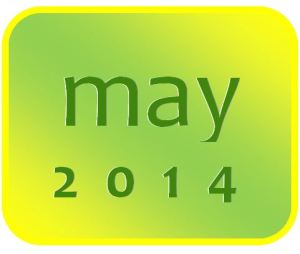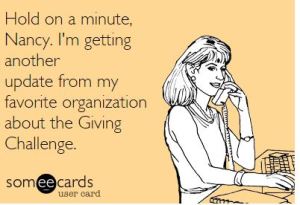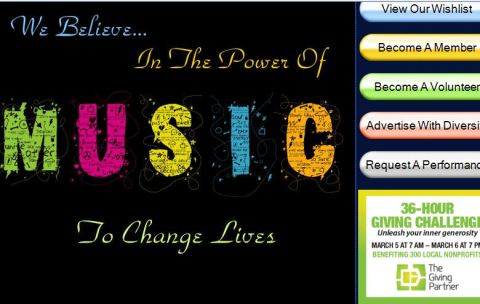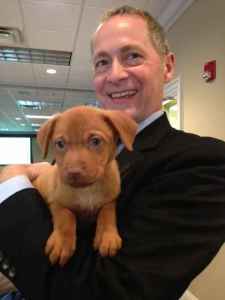The Next 36-Hour Giving Challenge: May 2014
March 28, 2013
 We’re sharing the good news now, more than one year in advance: the 36-Hour Giving Challenge is coming back to Southwest Florida next year.
We’re sharing the good news now, more than one year in advance: the 36-Hour Giving Challenge is coming back to Southwest Florida next year.
Mark your calendars for May 2014!
Why May?
The Council on Foundations will be working in partnership with community foundations around the country for Give Local America, a national day of giving. We couldn’t imagine a better way to join this national movement.
We also listened to you.
In our recent survey and in various conversations, some of our colleagues have shared that it was difficult to balance the Giving Challenge with special events and all of season’s other demands.
Now that you know a 2014 Giving Challenge is scheduled for May, when many of your people may be enjoying time up north, how will you shape your strategy?
Your online communities will be more important than ever, and you have some serious lead-time in getting ready. Anything you do will build your capacity to communicate and engage supporters, regardless of the Challenge itself.
How can we best help you? Let us know, and we will do our best to weave your ideas into our plans to help you on the journey.
Several folks in the community have e-mailed Dan Pallotta’s recent TED talk to us over the last few days.
In “The Way We Think About Charity is Dead Wrong,” Pallotta asserts that measuring nonprofits by what they spend instead of by what they accomplish will not take us far along the path of social progress. Like most of us in the field, we’re big believers in this message.
A few years ago, Gulf Coast Community Foundation brought Pallotta to town to address an audience of donors, nonprofits and community leaders. His message and delivery were both big hits. Recently, funders from across the state had a chance to hear him speak at the Florida Philanthropic Network’s annual conference in Orlando.
Although Pallotta has been sharing this story for years now, there is no doubt that some donors find it difficult to break out of an old paradigm focused on low salaries for talented nonprofit leaders and extremely low administrative expenses as “worthiness factors” for charitable contributions.
Local funders are taking an active role in providing ongoing guidance to help bridge a shift in understanding.
The Giving Partner shares the more comprehensive view of nonprofit effectiveness we are seeking, providing donors and prospective supporters with knowledge about your programmatic impact, leadership, and strategies–in addition to financials.
Though many elements of nonprofit profiles are verified data points, the profile also allows organizations to share their history, goals and accomplishments, examples of program success and more.
Your partnership with us in developing and updating your nonprofit’s profile in The Giving Partner helps us relay your story more fully. And by choosing a few strategic goals to focus on every year, your overall success will increase and be visible in a central place where local funders and donors can view it.
GuideStar provides this technology in partnership with forward-thinking communities across the country. We’re proud to be one of those communities, and we offer this service to philanthropists big and small through your participation.
Keep up the great work.
Thanks to Wendy Leslie, Lori Denison, and the host of others who have forwarded Dan Pallotta’s video and recent commentaries to us. We always look forward to your e-mails.
-Susie Bowie
Community Foundation of Sarasota County
Fatigued Donors or Heroes for Your Cause? It’s Up to You.
March 25, 2013

Your donors should not be running in the other direction but leaping with joy as you recognize them for the heroes they really are.
Donors are so fatigued. They are asked by multiple nonprofits to give, and then they are asked again. They can’t possibly stomach the endless messaging and competition from various organizations for their attention and affections.
Is this true? We hear it a lot.
I just read an interesting article in the Nonprofit Quarterly, “’Donor Fatigue’ an Excuse for Poor Fundraising.”
Author Simone Joyaux, ACFRE writes, “It’s not the asking that fatigues me. I’m tired of insufficient love from you. You don’t tell me how you spent my money. You don’t tell me that I’m a hero, even if my gift was only $25. I’m not looking for stunning creative. Stop it! I want good old-fashioned well-written fundraising letters.”
Two questions are floating around about donor acquisition and retention in crowdsourced funding and time-limited digital campaigns like the 36-Hour Giving Challenge. Did any new donors give to your organization? Will your donors return to give again?
We do know the answer to the question about first-time donors, and we asked about lapsed donors as well.
- Only three percent of nonprofit respondents to our recent survey indicated they did not receive gifts from new donors in the 36-Hour Giving Challenge.
- Nearly half of responding nonprofits (48%) reported that lapsed donors who had not contributed to their organization in the last 2 years gave during the Challenge.
So these donors have made the first move. Will the donors who came forward to support your nonprofit in this fast, fun community-wide campaign return to give again? The answer is really up to you, whether the donors were “new” or not.
We hope Simone’s comment about wanting to feel like “a hero,” even if her gift was “only $25,” resonated with you.
The data tells us that 45% of all gifts made during the Challenge were $25 donations.
If you want more than a one-time shot with them, you have to invest in retention and know that they will most likely not give again without your care.
You have donor contact information. Use it! Reach out to them. Share what heroes they are to the kids, seniors, families or animals who depend on them.
We highly recommend you take a look at Simone’s entire article. It’s written from the perspective of a donor, but the author is a fundraising professional with serious experience.
-Susie Bowie
Community Foundation of Sarasota County
E-Mail Overload?
March 20, 2013
 With the support of nearly 287 nonprofits in Southwest Florida, e-mail inboxes from here to Alaska and back were burning hot with urgent messages encouraging donations, clicks and sharing during the 36-Hour Giving Challenge.
With the support of nearly 287 nonprofits in Southwest Florida, e-mail inboxes from here to Alaska and back were burning hot with urgent messages encouraging donations, clicks and sharing during the 36-Hour Giving Challenge.
E-mail marketing in general is one of the most cost-effective communication tools for nonprofits. For a digital campaign like the 36-Hour Giving Challenge, it can be super important.
What happens when one donor who supports many causes receives multiple messages from multiple institutions in the span of a few weeks or days?
I’ll tell you one story about a Community Foundation donor. She enjoyed getting the various messages from the organizations she supported, and forwarded each of them to me just in case I wasn’t on the list. It helped to build excitement and momentum for the unfolding Challenge, and I enjoyed watching her taking it all in from my vantage point behind a different monitor.
Every nonprofit supporter may not have felt the same way.
It’s possible for too much volume in a short time period to kill the message and messenger.
So in a situation like this, what is a nonprofit to do? Certainly we see value in short, compelling storytelling and careful planning to use your digital equity wisely. Multiple “blast” e-mails to your entire list may not be the answer for your organization. (Hint: this is nothing unique to the 36-Hour Giving Challenge!)
Now is the time to start thinking creatively about future possibilities.
If we host another Challenge, the e-mail machine is inevitable. We know it today. How will your nonprofit address it? We hope it’s not by choosing to limit your outreach.
You have time to start shaping your list segmentation, building your social media power, and dreaming up adjusted approaches to reach your current supporters and new ones.
Considering all of the options at your disposal is about far more than success in the Giving Challenge. It’s a good exercise in building your flexibility, understanding your audiences, developing truly good content, and integrating your approaches. (And why not add your thinking to the communications plan in your Giving Partner profile?)
If your organization believes that too much e-mail was a problem, start using the cumulative brilliance of your team to consider new strategies for next year’s toolbox to refine your approach. (We’re guessing that you don’t want the foundations to impose guidelines on how nonprofits should use e-mail.) We will love to see what the talented thinkers in our community come up with.
And don’t forget, there are many who really enjoyed receiving your e-mail updates and encouragement. I heard it constantly from donors and community leaders who were amazed at what Southwest Florida accomplished together.
-Susie Bowie
Community Foundation of Sarasota County
Can Small Organizations “Compete” With Large Organizations?
March 20, 2013

Diversity: The Voices of Sarasota, a LGBT chorus that celebrates all of humanity and inspires our community to embrace equality, raised more than $7,000 in the Challenge.
There is the tiniest little buzz we hear every so often, whispering that small organizations can’t compete with the large ones in fundraising opportunities like the 36-Hour Giving Challenge.
Our response: success is a function of effort, planning and mobilization.
Do donors base their giving decisions on the budget size of organizations? Is there proof that only large organizations can mobilize effective teams because they have staff (or larger staff)? We have evidence to the contrary on both accounts.
As we consider these ideas, let’s look at some examples from the 36-Hour Giving Challenge.
How did we define small and large organizations in the Challenge?
We took the annual projected expenses for all organizations with profiles in The Giving Partner and found the median. That median was approximately $500,000.
When you consider the amount of funding raised by small organizations vs. large ones, it’s helpful to also consider these dollar figures as a percentage of their overall operating budgets.
Are small nonprofits really “competing” with large nonprofits?
I would argue that donors make decisions about which nonprofits to support based on factors like effective messaging and good storytelling, a history of programmatic success in the community, financial stability, and peer recommendations. If your organization is a small one and you believe that the large guys are outperforming you in all of these areas, why would a donor support you? (Framed a little differently, nonprofit effectiveness and good communication are not functions of size.)
Do we have examples of small organizations that heavily invested in the 36-Hour Giving Challenge and succeeded?
That we do. But remember, “success” is in the eye of the beholder. We stressed the importance of setting organizational goals this year and targeting efforts–however large or small–to achieve those goals.
Here are a few examples of success from all-volunteer organizations with very small budgets, under $70,000.
- Fairy Tail Endings
Annual Budget: $68,050
Number of full-time/part-time staff: 0/0
Total Gifts Received: 239
Amount Raised in Online Donations: $11,430
As Percentage of Annual Budget: 17%
- Diversity: The Voices of Sarasota
Annual Budget: $56,625
Number of full-time/part-time staff: 0/0
Total Gifts Received: 146
Amount Raised in Online Donations: $7,050
As Percentage of Annual Budget: 12%
- Sarasota Architectural Foundation
Annual Budget: $7,000
Number of full-tim/part-time staff: 0/1
Total Gifts Received: 34
Amount Raised in Online Donations: $5,550
As Percentage of Annual Budget: 79%
Three $2,000 Night Owl grants were awarded to organizations based on random donors who made gifts between the hours of 11 p.m. on March 5 and 2 a.m. on March 6. Two of the three donors randomly selected contributed to very small organizations: Fairy Tail Endings and Project 180.
Each organization had some luck in the game, but their “winnings” would not have been possible without mobilizing people to give during those wee hours in the morning.
The bottom line: we saw some serious data demonstrating what big players “small” organizations could be in fundraising when they make a commitment to participate.

David Biemesderfer, President & CEO of the Florida Philanthropic Network, gives some extra love to a rescued puppy from Honor Animal Rescue while visiting during the 36-Hour Giving Challenge
If you stopped by to visit during the 36-Hour Giving Challenge, you had the opportunity to meet Lori Larson, the senior director of DonorEdge at GuideStar. (DonorEdge is the national brand for the tool we call “The Giving Partner” locally in Southwest Florida, helping donors and funders make more informed choices about giving through better nonprofit knowledge.)
Lori doesn’t typically visit community foundations during Giving Challenges. She came to us because our community is such an epicenter of philanthropy and collaboration.
Our Challenge was made possible not by one foundation, but by six of them. The Community Foundation of Sarasota County, in partnership with The Patterson Foundation, presented the Challenge with support from Gulf Coast Community Foundation, Manatee Community Foundation, Charlotte Community Foundation and the William G. and Marie Selby Foundation.
Lori was touched by the exceptional nature of our community, with so many funders coming together to promote giving in one initiative. She also remarked about the greatness of so many nonprofits taking the plunge to work together during the 36-Hour Giving Challenge.
Lori’s recognition of our community’s uniqueness from her esteemed national point of view is pretty special.
David Beimsderfer, president and CEO of the Florida Philanthropic Network (FPN), also paid us a visit. FPN is the statewide association of grantmakers, with members representing family foundations, community foundations, corporate funders and others.
Be sure to read David’s blog post to understand the significance of our local giving event from the perspective of a professional who witnesses many philanthropic endeavors across our state.
He writes, “Kudos to everyone involved in this year’s 36-Hour Giving Challenge, from the nonprofit participants to the donors to the foundation and business supporters. It’s encouraging and inspiring to see that philanthropy is alive, well and growing in Florida.”
Special thanks to both Lori Larson and David Beimsderfer for sharing these exciting moments of generosity with us.
Secret Shoppers in Philanthropy
March 13, 2013
 What’s that you say, Kivi Leroux Miller? “Donors want something quite simple: a prompt, meaningful thank you letter and additional communication that explains how the donation was used. That’s it. Eighty percent of donors say that would convince them to make the second gift.”
What’s that you say, Kivi Leroux Miller? “Donors want something quite simple: a prompt, meaningful thank you letter and additional communication that explains how the donation was used. That’s it. Eighty percent of donors say that would convince them to make the second gift.”
Kivi is right, the Queen of Philanthropy is Gratitude. She blogs about nonprofit marketing on Nonprofit Marketing Guide and has visited our community once before for a workshop with nonprofits. (Don’t miss her post “Nine Clever Ways to Thank Your Donors.”)
In our recent survey to nonprofit participants in the 36-Hour Giving Challenge, MANY organizations are indicating that staff/board sent thank you e-mails either during the Challenge itself or in the following days.
Here’s some of the intelligence that has come my way:
- I personally donated to eight organizations and received a speedy thank you from six organizations. One nonprofit sent me a “bulk” thank you focused on its overall place on the Leaderboard (which I wasn’t interested in as a donor) instead of concentrating on how my gift would make a difference. The other notes were heartfelt and lovely. One of them even sent a thank you video.
- One donor who gave to ten organizations on Tuesday morning instant messaged me on Facebook Wednesday mid-morning to let me know she had only heard from one of them.
- An aunt in North Carolina gave during the Challenge to support me. Within 24 hours, she received two lovely acknowledgements from the organization she supported and texted me to let me know how meaningful it was to her.
- My parents donated to two organizations they have never supported in the past. One of them sent a very personal thank you within hours of the online donation. The other has not thanked them.
- A leader of a local foundation who personally donated to quite a few organizations was surprised not to have received an acknowledgement from most of them as of this Tuesday afternoon, but delighted to have received both email and US Mail thanks from some.
The time is right to make your donors feel really good about supporting you in the Challenge.
Many organizations are doing this well, and they are the ones who will stay close to the hearts of their donors.
There is nothing fancy required–no money spent on premiums or flowers–just a genuine communication to convey the gratitude from your team and the clients you serve.
Let’s get keep those good vibes going out there.
The Story of Manatee Glens Stepping Up to the Challenge
March 11, 2013
 It was a tall order, even for the amazing judges in charge of the Best Overall Campaign decision for the 36-Hour Giving Challenge. Carrie Rasmussen (Herald-Tribune Media Group), Bryan Kelly (Clear Channel), and Sandi Wall (Comcast) deliberated over the array of creative and successful campaigns submitted last Thursday.
It was a tall order, even for the amazing judges in charge of the Best Overall Campaign decision for the 36-Hour Giving Challenge. Carrie Rasmussen (Herald-Tribune Media Group), Bryan Kelly (Clear Channel), and Sandi Wall (Comcast) deliberated over the array of creative and successful campaigns submitted last Thursday.
People dressed up, videos were posted and shared thousands of times, Mario visited us courtesy of Community Youth Development, famed VP of Advancement Tom Waters was moonlighting as Gilly the Shark for Mote Marine, and there was a lot of dancing involved–Harlem Shake-style–with Arts & Cultural Alliance of Sarasota County, the Cat Depot, and others.
We also enjoyed Phil King and the Phunky Philanthropists performing Facebook concerts on behalf of the Glasser-Schoenbaum Human Services Center.
Ultimately a unanimous decision was made by the three judges. Manatee Glens was pronounced winner of the Best Overall Campaign in the 36-Hour Giving Challenge.
Its “Stepping Up” campaign raised awareness about sexual assault and the organization’s important role in awareness, prevention and rape crisis programs. Campaign elements included a fun run/walk, videos, photos of community members and business partners wearing tennis shoes and special shoelaces demonstrating their support, statistics on sexual assault shared via social media, and a fully engaged board and staff.
Judges said this:
The strength of the awareness campaign was significant — prior to engaging through the Giving Challenge, none of the committee was even aware that the organization handled rape crisis treatment, only knew of the substance abuse treatment.
We think that the opportunities they utilized to shore up their staff engagement, to ensure their board participation and to reinforce their important partnership with the Sheriff’s office stood out to not only raise the value of the organization in the eyes of their community but also to bolster this organization from this day forward.
We were impressed with their social media engagement as well. We think the strength of this campaign shows every sign of motivating this team to be one of your top contenders in financially next year.
Hats (and shoelaces) off to Manatee Glens. Check out some of their media here:
Stepping Up! (Manatee Glens Staff Video, Celebrating the Challenge)
Janet Ginn, Thank You (Video Ending the Challenge)
3 Photo Albums on Facebook
We thank all of those bold enough to enter their campaign in the “Best Of” category. The only losers out there would be those who sulk about the results. But we know they don’t exist among these participating nonprofits.
Whether or not a campaign was selected as the finalist, the increased awareness and fun involved were hopefully significant for the team players. Both came out in full force for the community.
